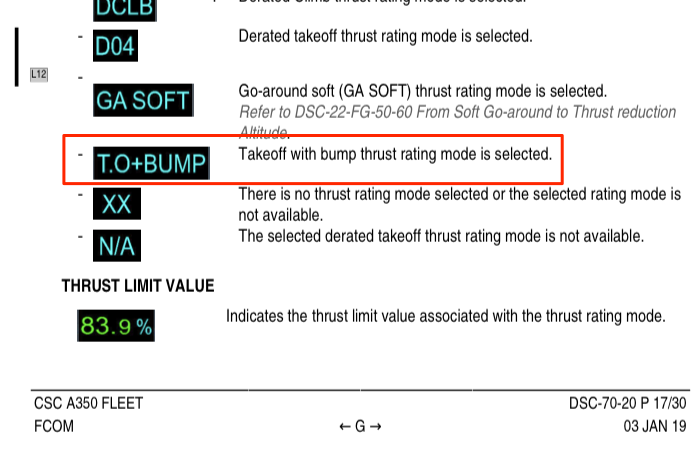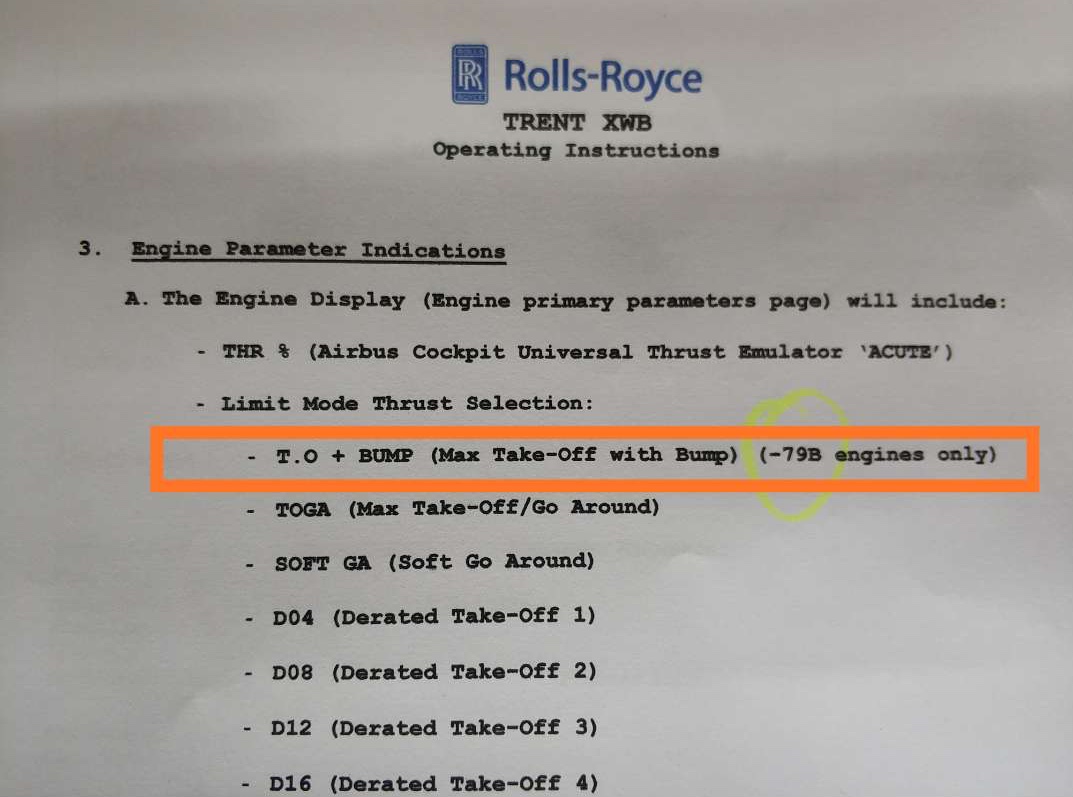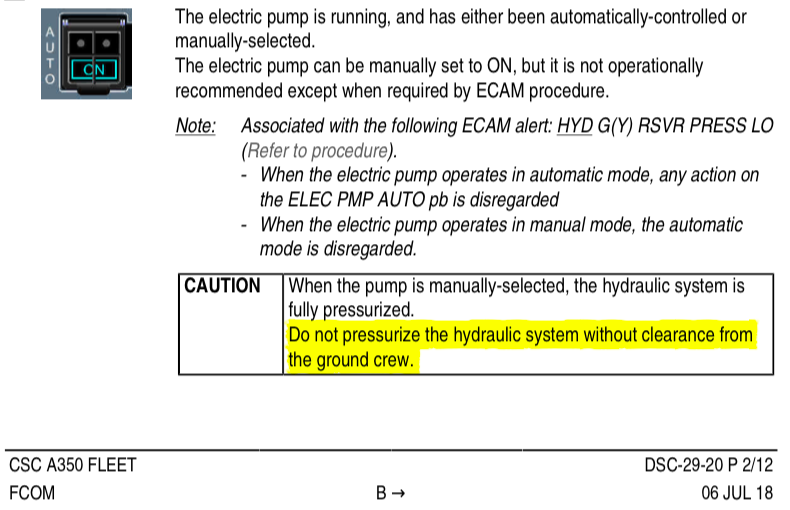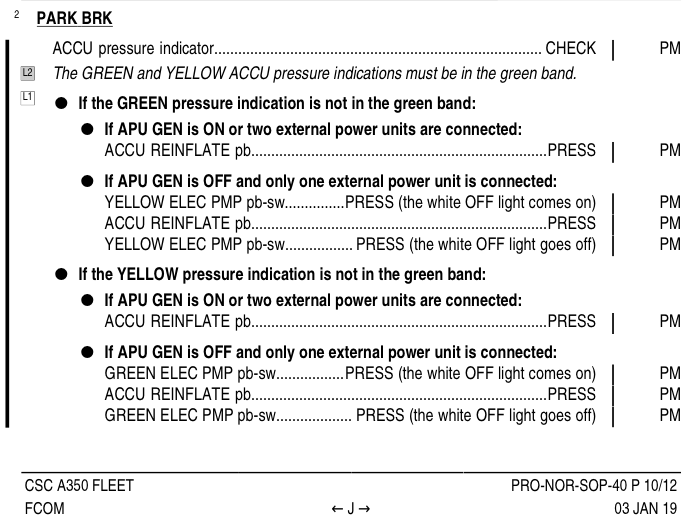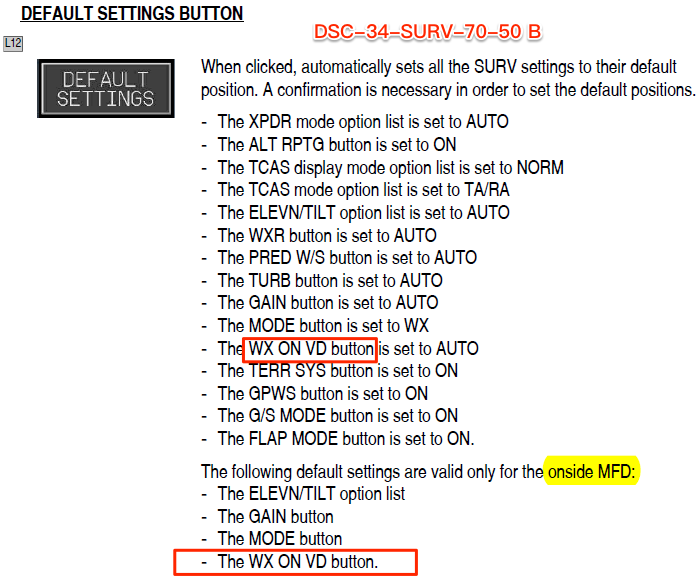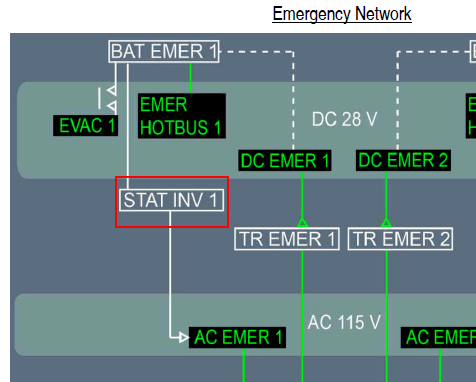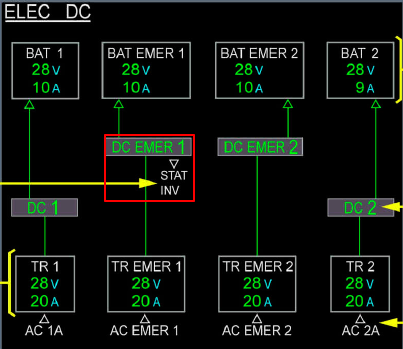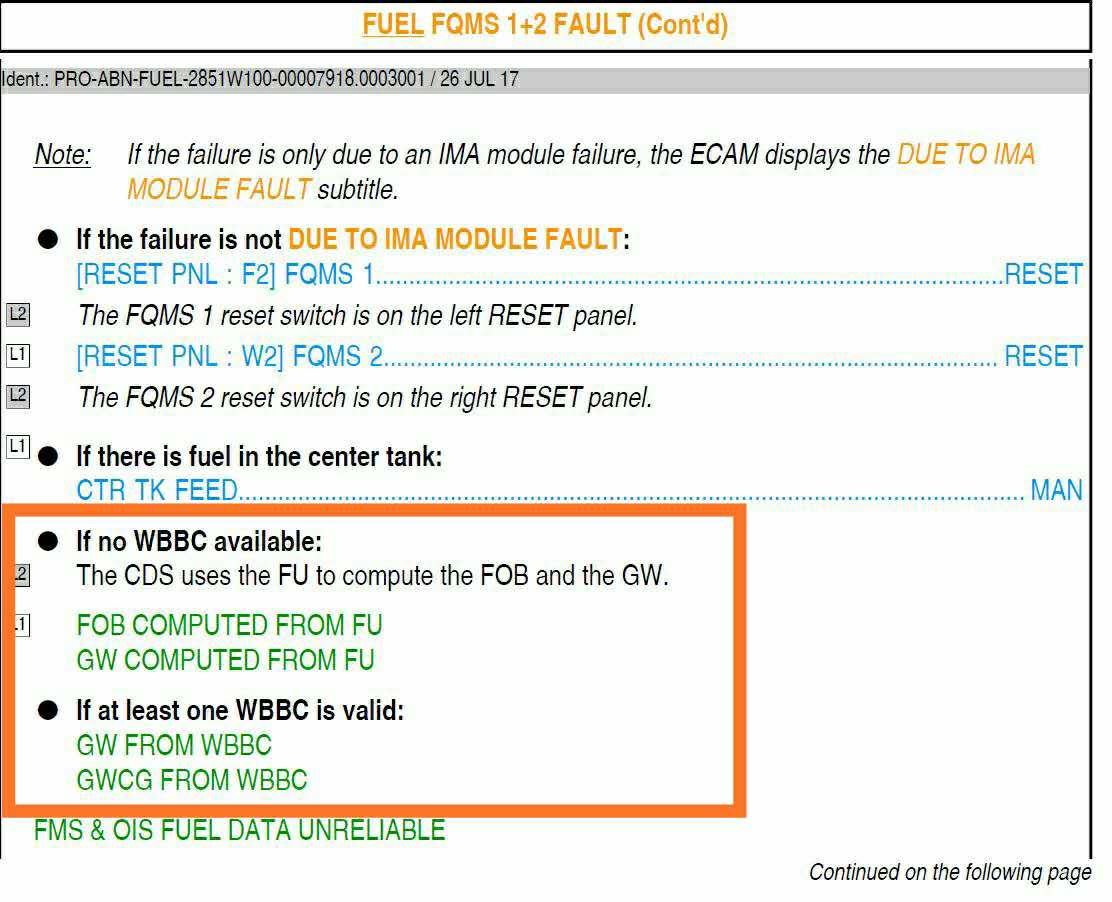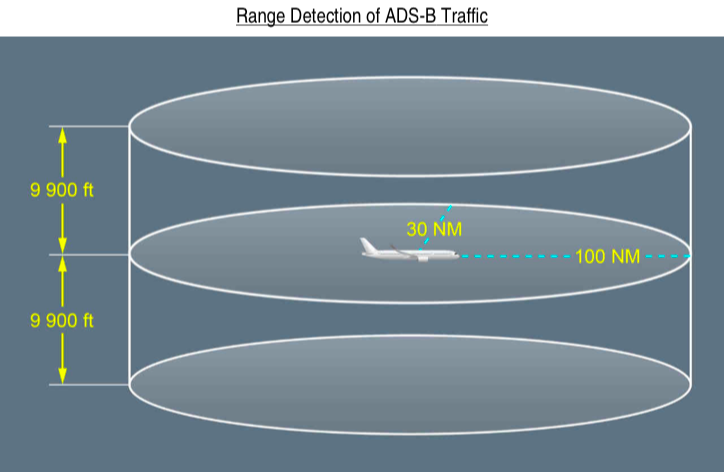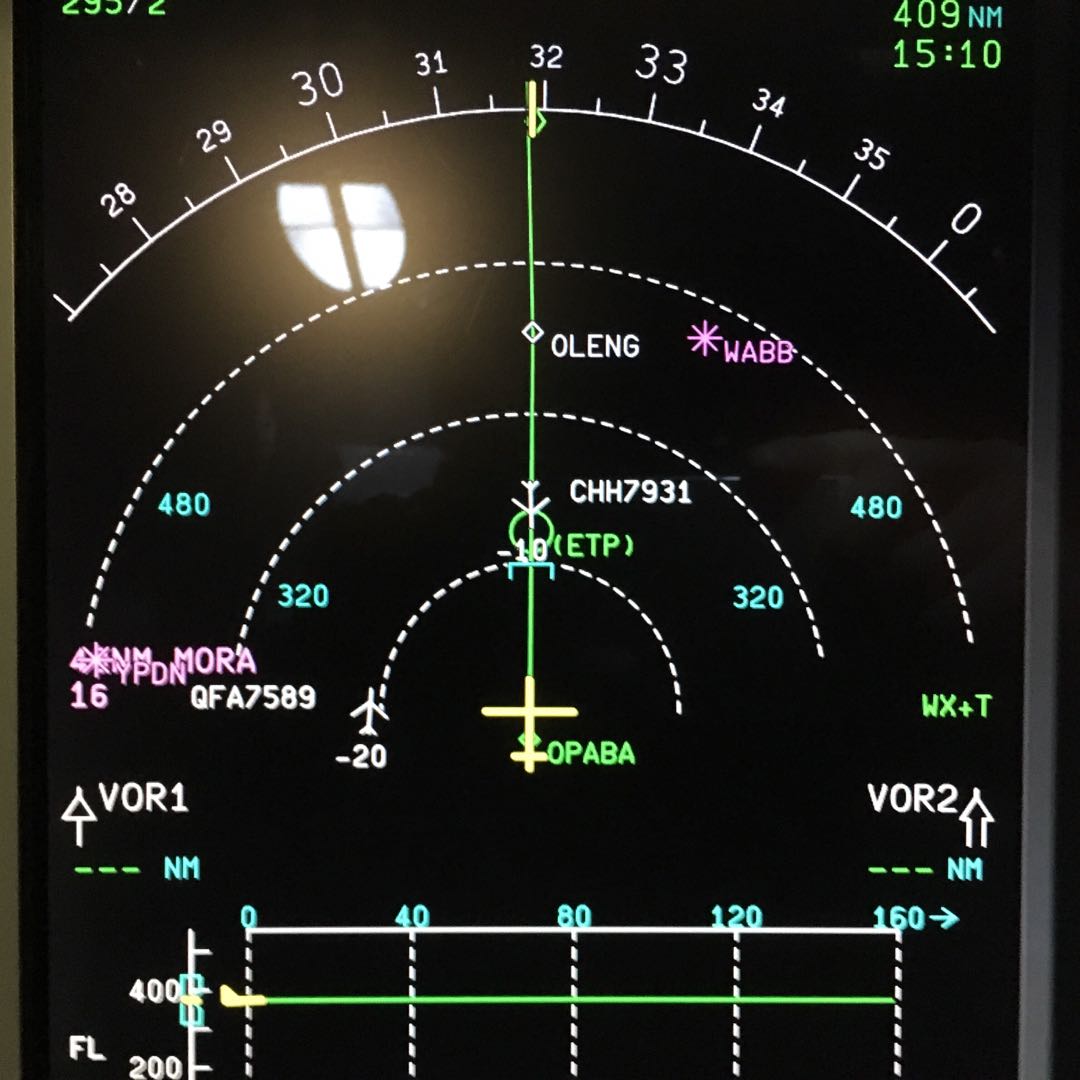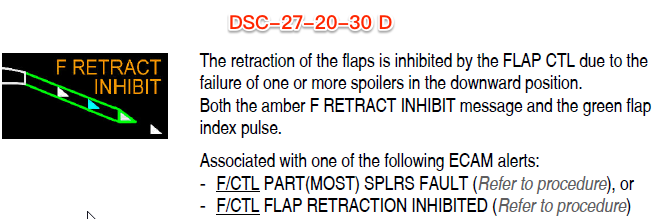在前段时间手册学习的过程中,发现一些 A350 FCOM 上不理解或者怀疑有错误的地方,向空客提出了 TechRequest。最近收到回复,这里把问题和回复都列出来,以及附带一些驻场代表提供的相关资料。
Q1: What is "T.O+BUMP " mode?
Except this, no other info about the mode in the FCOM:
Thank you for your useful feedback. The T.O+BUMP mode is a provision but not applicable to RR Trent XWB engine, and as such, the information will be removed from the FCOM July 2019 revision.
驻场代表:
一般来说BUMP模式指的是"推力增强模式",在非常炎热的地区,起飞时发动机容易超温,或者由于外界温度太高,发动机达不到全推力起飞,这时发动机可以选装BUMP模式来增加起飞推力,并且避免EGT超温。
对于350飞机来说,我和罗罗代表沟通了一下,BUMP模式只适用于79000磅的推力,见下边罗罗提供的图,这是一个非常少见的推力,因为目前投入商业运行的350还没有使用这种推力。咱们的350用的推力是84000磅,没有BUMP模式。
Q2: Notify ground staff when reinflating accumulator or not?
In the DSC part of HYD, the “CAUTION” shows we should notify the ground staff. However, in the PRO part, there’s no any description about it. Is the design of ACCU REINFLATE pb already able to avoid the risk?
The electric pumps have two modes of operations:
- In automatic operation (e.g. for accumulator refill) only an auxiliary part of the hydraulic system is
pressurized only for cargo door operation and accumulator refill. - In manual operation (i.e. electric pump manually started with the ELEC PMP pb-sw), then the whole associated circuit is pressurized including flight control surfaces.
When the ACCU REINFLATE pb is pressed, the electric pump starts automatically so flight control surfaces are not pressurized.
As a consequence, there is no specific requirement to notify ground personnel for accumulator refill.
Q3: What is "WX ON VD" button?
Except this, no other info about it in the FCOM:
This WX ON VD button is not applicable to the A350 family. Thus, thanks to your useful feedback, the DU DSC-34-SUR-70-50 B will corrected in the FCOM July 2019 revision.
Q4: Inconsistent of upstream to AC EMER via STATIC INVERTER
All the Network digram indicate that upstream of STAT INV is BAT EMER, but all the SD pages shows the upstream is DC EMER. And the associated descriptions are inconsistent.
Airbus does confirm that the static inverter transforms DC power from BAT EMER 1. The DU DSC-24-30 B will be corrected in the FCOM July 2019 revision. Thanks to your feedback, we have launched an investigation about the ELEC DC SD page design at Design Office level.
Q5: Which one computes the GW after FQMS failure, CDS or WBBC?
There are some different descriptions:
When the GW from FQMS is not available, the first backup that is used is the CDS computation.
If the CDS computation is not available, then the WBBC value is used.
From a flight crew perspective, this is made very clear via the following ECAM information lines that clearly indicates the current source, depending on the actual failure case:
GW COMPUTED FROM FU
Or
GW COMPUTED FROM WBBC
These ECAM information lines are part of the FUEL FQI FAULT and FUEL FQMS 1+2 FAULT alerts.
We agree that the system description can be improved. Thanks to your valuable remark, the system description will be updated in the FCOM July 2019 revision.
驻场代表:
WBBC 和CDS都可以计算,要看具体的故障情况。
Q6: Inconsistent between discreption and actual phenomenon of ADS-B TRAFFIC detection range
In FCOM, the detection range of ADS-B traffic is small. In actual flight, the range is much more than it, especilly on the lateral. How to explain it?
A350 AESS is capable of active and passive surveillance of traffic through TCAS function.
Depending on data received from the intruder, this intruder could be identified as a TCAS only, ADS-B Only or hybrid traffic and could be displayed accordingly on ND/MFD displays (ATSAW option needs to be activated for ADS-B only or hybrid displays).Some criteria exists for ATSAW traffic (i.e. for hybrid or ADS-B only traffic) to be displayed on ND including:
- ATSAW function is available (activated and not faulted)
- Considered traffic is eligible for ATSAW function (depends on received ADS-B data performance)
- Considered traffic is airborne
- If considered traffic is selected :
- Traffic within +/- 9900 ft - If considered traffic is not selected:
- Traffic within ND mask
- Traffic within TCAS vertical filter
- Traffic among 8 most threatening traffics
Airbus agrees that the illustration about the Range Detection of ADS-B Traffic might be misleading and
this illustration will be updated in the FCOM July 2019 revision.
Q7: Inconsistent discriptions in FCOM about ADHF
In System Description about ADHF, the PRIMs inhibit flaps retration only in CONF FULL. However, in Control and Indication about Slats/Flaps, the diagram shows “F RETRACT INHIBIT” in CONF 3.
The F RETRACT INHIBIT amber message indicates that the function is active. This message is independently displayed from the flap configuration. Thanks to your useful feedback, the DU – DSC 27-10-10 will be corrected in the FCOM July 2019 revision.

